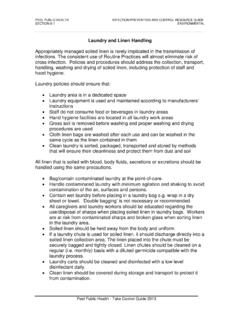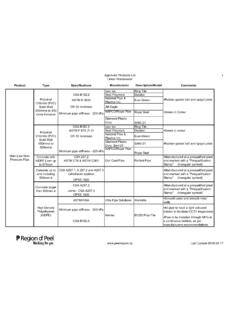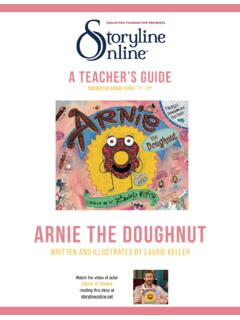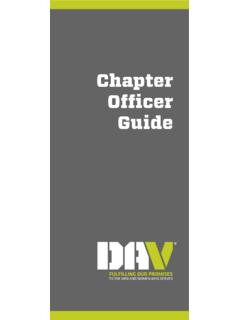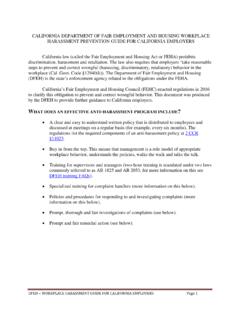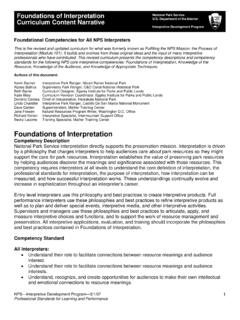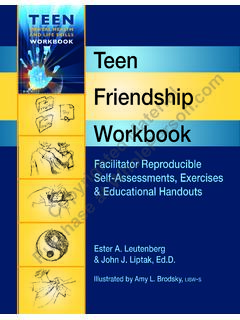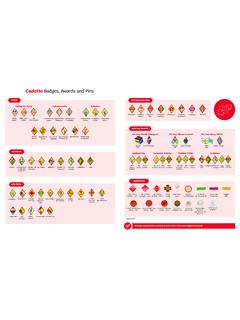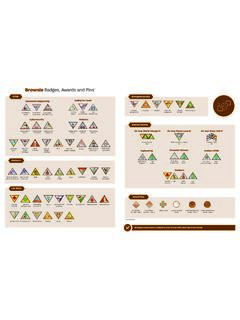Transcription of Lesson Seven - There’s Nothing Better than a Good Friend
1 Lesson Seven Changes In Me: A Puberty and Adolescent Development Resource for Educators Junior Grade Level, Second Edition Peel Public Health, Healthy Sexuality Program, 905-799-7700 Title: There s Nothing Better than a good Friend Theme: Considering the Characteristics of a good Friend Time: 175 minutes (approx. 3 hours) Materials: Want Ad for a Friend - Assignment friendship Stoplight - Laminated Game Magnets or Masking Tape Chart Paper & Markers Solving Problems In Friendships - Homework Assignment Agree/Disagree Chart Worksheet Ball (beach ball or object that can be tossed between students) Objectives to teach students about the concept of positive, healthy friendships to acknowledge the links between healthy friendships and positive self-esteem to consider the reasons it is important to have good friends to allow students to think about their own criteria for healthy friendships to discuss the healthy signs, warning signs and unhealthy signs in friendships to have students explore strategies to deal with difficult situations in friendships to identify the effects of social influences on gender roles and equity Curriculum Expectations 4p8 - identify the characteristics of healthy relationships ( , showing consideration of others feelings by avoiding negative communication) 4p9 - identify the challenges ( , conflicting opinions)
2 And responsibilities in their relationships with family and friends 5p9 - identify strategies to deal positively with stress and pressures that result from relationships with family and friends 5p10 - identify factors ( , trust, honesty, caring) that enhance healthy relationships with friends , family, and peers 6p9 - apply a problem-solving / decision making process to address issues related to friends , peers, and family relationships 179 Lesson Seven Changes In Me: A Puberty and Adolescent Development Resource for Educators Junior Grade Level, Second Edition Peel Public Health, Healthy Sexuality Program, 905-799-7700 Background Information This Lesson focuses on the issues young people face surrounding friendships during adolescence. This topic is important because while friendships are vital throughout life, peer groups and social relations among friends gain increasing importance during puberty and adolescence.
3 As the peer group becomes a more significant source of influence, friendships begin to take on new meaning. During puberty, children will be making new friends at school and in social settings, and many will also be coping with evolving friendships from their earlier childhood. Friendships are often put to the test during senior elementary and secondary school. Children struggle to maintain relationships with peers who may be changing in a variety of ways. Problems can occur when children form cliques, begin to hang out with different crowds, or when they simply grow apart from previous friends . Peer pressure can be a problem for adolescents. For example, sometimes young people who choose to use drugs and alcohol try to persuade their friends to do the same. Inevitably, the friends children choose will shape their experiences in critical ways.
4 This Lesson is designed to compel students to think about their own criteria for postive friendships, to discuss ways to evaluate friendships and to explore ways to deal with difficult situations in their friendships. Procedure Activity One: Class Discussion Regarding Friendships - 30 minutes Tell your students that you will be discussing friendships during today s Lesson . Encourage students to participate frequently during the discussion, as their input on this topic is very Lesson Seven Changes In Me: A Puberty and Adolescent Development Resource for Educators Junior Grade Level, Second Edition Peel Public Health, Healthy Sexuality Program, 905-799-7700 Here are some ideas you may use to guide your discussion. What kind of things can we do to begin and keep friendships?
5 Join a club or a team. Meet a neighbour. Seek out a Friend at school. Make contact with the person you would like to know Better . Find ways to spend time with him/her. Talk about yourself, sharing more information as time goes by. Talk on the phone, write text and/or instant message or e-mail notes to your Friend . What is a Friend ? friends are people ..we feel close to. friends are people who have similar interests, people who care about us, and people we can trust. friends offer support and understanding when we really need it. Last class, we talked a lot about self-esteem or feeling good about ourselves. How do you think self-esteem is related to friendships? When we feel good about ourselves, we are more likely to choose friends that are good for us. There is a saying that says, we teach people how to treat us.
6 In other words, how we behave toward ourselves and other people gives them clues as to how they should behave towards us. If we feel good about ourselves and respect ourselves, and treat others with respect, we are showing people how we would like to be treated. Why is it important to have good friends ? True friendship is important. friends support one another, listen to each other and give advice. When you and your Friend share personal information about yourselves, you can learn from each other and explore what you have in common and what makes you different. friends can teach us many things like how to play a game or how to make a craft. friends can introduce us to exciting things like delicious new foods and interesting customs or celebrations. You can also learn about acceptance by appreciating the different qualities that make us unique individuals.
7 When you accept people for who they are, you are being a respectful Friend . 181 Lesson Seven Changes In Me: A Puberty and Adolescent Development Resource for Educators Junior Grade Level, Second Edition Peel Public Health, Healthy Sexuality Program, 905-799-7700 What kinds of things do you like doing with your friends ? Ideas might include: playing games (video) and sports, hanging out, having lunch together, attending Girl Guides, Boy Scouts or other community groups, going to classes together ( , dance, martial arts, music lessons), watching television/movies, using the computer, working on projects and/or doing homework together. How can we be good friends ? Share our interests and activities Trust each other and be honest Share our thoughts and feelings Respect each other s opinions and beliefs Try to relate to how the other person feels Be sincere with each other Accept each other for who we are Encourage and support each other Commit to the friendship Activity Two: (2 parts) Part A: Ball Toss 10 minutes This is a warm-up activity to help students explore the qualities of healthy relationships.
8 Have the students stand up behind their desks or in a circle at the front of the room. Toss the ball to someone in the group, and ask them to call out a word that represents qualities of a healthy relationship (for example; trust, supportive, kind, ). Ask that person to then toss the ball to someone else. Each time a new student catches the ball, ask them to share a new and so on. Part B: Want Ad for a Friend - 20 minutes Tell your students that you would like them to think about the characteristics that are most important in a Friend . Distribute the assignment entitled, Want Ad For A Friend . Ask your students to complete this assignment individually. Allow students ten to fifteen minutes of quiet writing time. Once students have written the advertisement, ask some students to share their work by reading aloud to the class.
9 ( friendship Want Ad handout can be found following this Lesson ) 182 Lesson Seven Changes In Me: A Puberty and Adolescent Development Resource for Educators Junior Grade Level, Second Edition Peel Public Health, Healthy Sexuality Program, 905-799-7700 Activity three : friendship Stoplight Game - 30 minutes Here are the instructions to set up the friendship Stoplight Game. (The Stoplight game cards can be found following this Lesson ). On the top left corner of your board or wall space, use tape or magnets to attach the red stoplight card that reads, These are bad signs in a friendship . Changes In Me: A Resource For Educators On Puberty And Adolescent Development Peel @ 905-799-770 Peel Health Department: Healthy Sexuality Program Contact Health Line0 Place the corresponding yellow and green stoplights underneath, like in a street stoplight.
10 Changes In Me: A Resource For Educators On Puberty And Adolescent DevelopmentPeel Health Department: Healthy Sexuality Program Contact Health Line Peel @ 905-799-7700 Shuffle the stoplight scenario cards to ensure that they are not in order. Changes In Me: A Resource For Educators On Puberty And Adolescent DevelopmentPeel Health Department: Healthy Sexuality Program Contact Health Line Peel @ 905-799-7700 The graphic shown below appears on each scenario card. The object of this game is to decide which scenarios are most compatible with each of the following three statements: these are bad signs in a friendship , these are warning signs in a friendship and these are good signs in a friendship .



